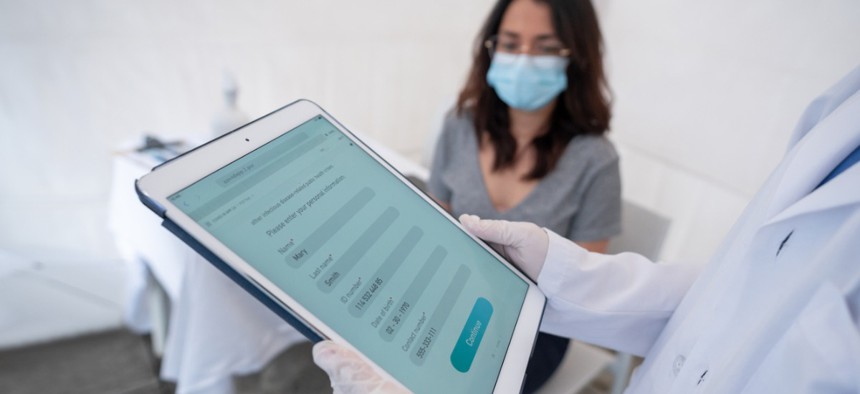Public Health Admins Are Prioritizing Interoperability with EHR Modernization

andresr/istockphoto
Federal agencies using electronic health records systems are hoping standardizing EHR interfaces will lead to greater cross-departmental and patient access.
Federal public health administrators are emphasizing interoperability as government agencies continue to implement electronic health records (EHRs) across federal public health agencies.
A litany of officials from government organizations including the Department of Health and Human Services and the Department of Defense joined a panel discussion Thursday talking about the health IT goals between federal organizations and the ongoing effort to implement EHRs into their daily business processes.
EHRs are digital copies of patient health records that turn a patient’s medical history into a single, shareable file to reduce the administrative and cost burdens and optimize clinicians’ ability to deliver positive health care outcomes.
A major goal of the current efforts to modernize and implement EHRs across several federal agencies hinge on sophisticated data collection and cross-department sharing capabilities, with a focus on helping patients access their records. As more vendors develop their own applications to access and transfer EHRs, compatibility issues between interfaces make it challenging to share patient data. Standardization of these platforms would facilitate patient data sharing between health care providers.
Rolling out EHR platforms stands as a major challenge that involves the deployment of new software and training of the existing workforce. Agencies like the Defense Department and Veterans Affairs Department have struggled to implement new EHR systems, spending billions amid scheduling delays and numerous implementation issues.
Featured speaker Micky Tripathi, the National Coordinator for Health IT within Health and Human Services, said that his office is focusing on standardizing EHR systems within application programming interfaces (APIs) to facilitate the sharing and accessibility of medical records.
“By the end of 2022, certified EHR vendors are required to make available an API based on a particular technical standard and implementation guide,” he said. His office will formulate these industry standards to harmonize EHR application features and encourage interoperability.
He added that this response was born from EHR vendors creating different applications to help patients and caregivers access digital records without an industry standard. Triparhi said the different apps create friction between providers trying to access the same data through a different interface program.
Standardizing the EHR platform and corresponding APIs will aid in fluid cross-agency sharing.
“We still see a lot of variation,” Tripathi said, noting that the new requirements due out next year will hopefully enable the market to develop better solutions for patients accessing their EHRs.
This standardization will be important for collaboration between public health agencies, such as the Centers for Medicare and Medicaid and Defense, which are working to develop a common EHR platform to enable a seamless transfer of care.
Alexandra Mugge, the deputy chief health informatics officer at CMS, said that providing a common application interface will remove barriers to sharing and collecting patient health information.
“We all have to coordinate to ensure that we get to better usability, to ensure that our requirements aren’t conflicting with one another,” Mugge said. “The main role of the EHR should be streamlining patient care.”
She said that Tripathi’s office has been supportive in collaborating with EHR platform standardization and encouraging interdepartmental data sharing.
In addition to the centralization of EHR interoperability, Mugge added that other priorities related to EHR modernization include adjusting the health plan prior authorization process within APIs, linking EHRs to health plan payers in real time, and integrating APIs in other CMS programs.
Adi Gundlapalli, the chief public health informatics officer at CDC, spoke alongside Mugge, and noted that the engagement of a diverse body of stakeholders is key to a standardized EHR interface that can be accessed by caregivers and patients alike.
“No one agency or individual can do it alone,” he said.
NEXT STORY: DOD names cloud contenders in JEDI replacement






